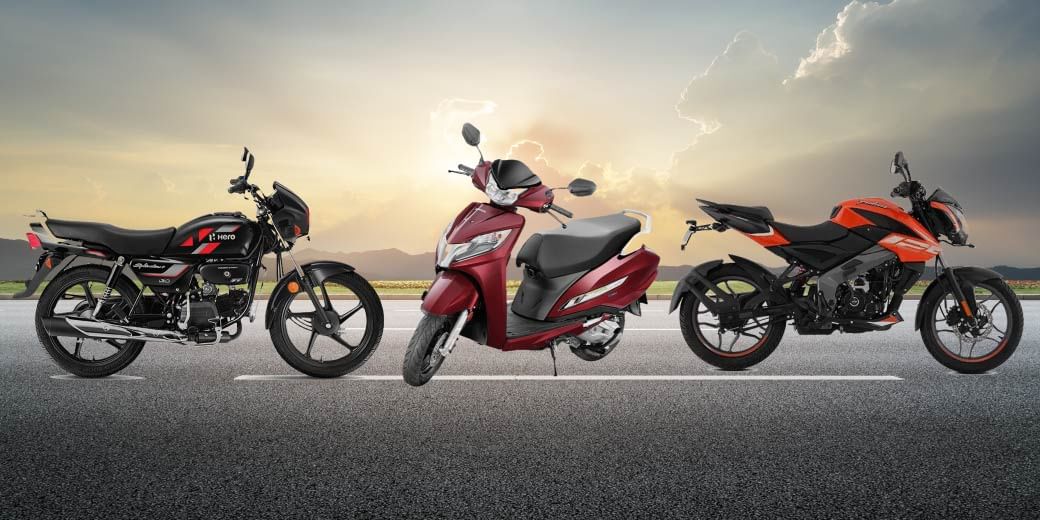2-wheelers gaining traction again; what should be your strategy?
There has been a recovery in two-wheeler sales figures in FY24, with an increase of over 10%, which indicates an improvement in rural demand
- Sandeep Grover
- Last Updated : April 15, 2024, 13:30 IST

Post the COVID pandemic, share markets across the world, including that of India, witnessed a rapid recovery. In FY21, the country’s major index, Nifty, recorded a growth of around 71%, and in FY22, it registered an increase of about 19%. However, if there was a particular section of the economy that was impacted the most after the pandemic, it was rural India.
A significant portion of demand in sectors like cement, paint, FMCG, plastic, and two-wheelers stems from rural areas. Here we will try to understand the impact of rural areas on the sales of the two-wheeler segment and also explore investment strategies you should opt for while investing in shares of two-wheeler companies.
India may be at the top of the list of rapidly growing countries world-wide, but this rapid growth pace is not spread uniformly across all sections of the Indian economy, especially in rural areas. This disparity was only exacerbated during COVID, when rural demand was severely affected. Subsequently, adverse weather conditions have further dampened demand. However, there has been a recovery in two-wheeler sales figures in FY24, with an increase of over 10%, which indicates an improvement in rural demand. Rural areas are the primary drivers of two-wheeler demand, accounting for over 50% of total sales. With consistent recovery in both urban and rural demand, two-wheeler sales have already surpassed pre-COVID levels. In FY24, two-wheeler sales reached around 1.85 crore units, indicating a recovery trend in rural demand.
Post-COVID, the recovery in two-wheeler sales was largely driven by the premium segment, i.e., bikes above 150cc. Premium segment bikes, which contribute 18% to total sales, witnessed an increase of over 10% in FY23, compared to only 14% contribution in total auto sales in FY18. Over these five years, the contribution of entry-level (76-100cc) and commuter (110-150cc) bikes to total sales has declined significantly. Despite the two-wheeler market plummeting to a decade-low in FY22 and showing limited recovery in FY23, there has been a notable increase in two-wheeler sales in FY24, with sales increasing by approximately 13% to around 1.85 crore units. According to a survey by Nielsen, rural demand has exceeded urban demand during December, January and February for the first time in three years.
Given these changes in demand patterns post-COVID, the pertinent question is, what should your strategy for two-wheeler companies’ shares be?
Arun Mantri, Founder of Mantri FinMart, suggests that you should consider Bajaj Auto with a target of ₹10,600 and Eicher Motors with a target of ₹4,300 from a three-month perspective. If March quarter results turn out favorable, targets of ₹11,000 for Bajaj Auto and ₹4,700 for Eicher Motors can be considered for a 6-9 month horizon. The valuation of TVS Motor in the 2W EV segment, the market leader, is quite high, he says.
Overall, there has been a shift towards mid-size cars in the passenger vehicle (PV) market, as opposed to small cars. Leaders in this segment include Toyota, Maruti, Tata Motors, and Hyundai, while Honda has fallen significantly behind. Therefore, it remains to be seen as to where the two-wheeler segment will settle. Will these companies focus more on premium bikes or entry-level ones? That is why it’s advisable to invest in selected companies in this segment from a short-term perspective and make decisions on long-term investments based on upcoming quarterly results.
Download Money9 App for the latest updates on Personal Finance.
Related
- Top 25 Best Selling Cars in the US Q1 2025 Ford Leads Tesla Holds, and Sedans Make a Comeback
- Vegan vs Non-Vegetarian: Which Diet Is More Nutritious and Better for Your Health?
- होंडा ने हेडलाइट समस्या को ठीक करने के लिए वापस मंगवाई CB300R मोटरसाइकिलें
- RBI ने लगातार दूसरी बार रेपो दर में कटौती की, कर्ज होंगे सस्ते
- Tata Motors की वैश्विक थोक बिक्री चौथी तिमाही में 3% घटकर 366177 इकाई
- सुरक्षा मानदंडों को पूरा करने की बढ़ती लागत की वजह से दाम बढ़ा रही हैं कार कंपनियां

